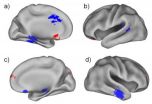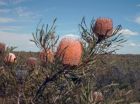URI geologist develops improved seismic model for monitoring nuclear explosions in Middle East
2010-12-17
(Press-News.org) KINGSTON, R.I. – December 16, 2010 – Geologists from the University of Rhode Island and Princeton University, in collaboration with Lawrence Livermore National Laboratory, have taken an important step toward helping the United States government monitor nuclear explosions by improving a 3-dimensional model originally developed at Harvard University. The improvements make the model more accurate at detecting the location, source and depth of seismic activity.
The results of their research were presented today at a meeting of the American Geophysical Union in San Francisco.
The National Nuclear Security Administration uses numerous seismic models in its efforts to monitor the globe for underground nuclear explosions detonated by nations that seek to keep their nuclear activities undetected. But not only is it difficult to identify exactly where an explosion takes place, it is especially challenging to differentiate the seismic waves generated by nuclear explosions from those generated by earthquakes, volcanic activity and mine collapses.
"The goal is to build a model of the Earth that will locate seismic events and characterize those events precisely while reducing potential errors," said Brian Savage, URI assistant professor of geosciences.
The model spans the politically sensitive region from Turkey to India, including Iran, Iraq and Afghanistan, a region Savage describes as "tectonically complex."
Savage and his colleagues analyzed data from 200 earthquakes collected by 150 seismic stations in the region between 1990 and 2007. They compared the data with that from simulated earthquakes to identify deficiencies in the model, then propagated the simulated earthquakes in reverse to determine where to improve and update the model.
Different types of seismic waves travel in different ways and at different speeds. P-waves, for instance, are the first waves recorded from an earthquake or explosion, and they behave similar to sound waves. S-waves are secondary waves that travel in a snake-like side-to-side fashion. Surface waves are a combination of the two traveling much slower with much larger amplitude.
"Depending on the material the waves travel through, it may slow down or speed up the waves," said Savage, who notes that the model requires a great deal of computer power to run. "So when you look at the relative timing of the waves, you can tell what the material is that it's traveling through."
The improvements the researchers made to the model focused on long period surface waves and identifying the magnitude of a seismic event.
"The amplitude ratios of different wave types is a key factor in discriminating whether an event is manmade or not," Savage said.
The improved model is expected to be complete by next summer. The research was funded by he National Nuclear Security Administration and the Air Force Research Laboratory.
INFORMATION:
ELSE PRESS RELEASES FROM THIS DATE:
Flu on the western front
2010-12-17
The World Health Organization set a target for the influenza vaccination rate for 2006 of more than 50% of the elderly population and an increase to more than 75% by 2010. These rates have thus far not been achieved in the old German states. In the current issue of Deutsches Ärzteblatt International (Dtsch Arztebl Int 2010; 107[48]: 845) the working group around Annicka M. Reuss presents rates from flu seasons past.
Germany's Standing Vaccination Committee (STIKO) recommends annual vaccinations against seasonal influenza. The risk groups for the infection, which ...
New study suggests almonds may help reduce risk of type 2 diabetes and heart disease
2010-12-17
Modesto, CA (Dec. 16, 2010) – With nearly 16 million Americans living today with prediabetes, a condition that is the precursor to type 2 diabetes, and half of all Americans expected to have either prediabetes or type 2 diabetes by the year 2020, nutritional approaches to maintaining healthy blood sugar levels are essential.1,2 The findings of a scientific study examining the health promotion and disease prevention benefits of almond consumption were published in the June, 2010 Journal of the American College of Nutrition. The study, one of the first of its kind to quantify ...
Decades after childhood radiation, thyroid cancer a concern
2010-12-17
When children are exposed to head and neck radiation, whether due to cancer treatment or multiple diagnostic CT scans, the result is an increased risk of thyroid cancer for the next 58 years or longer, according to University of Rochester Medical Center research.
The study is believed to be the longest of any group of children exposed to medical irradiation and followed for thyroid cancer incidence. It was published in the December 2010 edition of the journal, Radiation Research.
The data also might provide some insight about why the rates of thyroid cancer continue ...
Wind turbines may benefit crops
2010-12-17
AMES, Iowa – Wind turbines in Midwestern farm fields may be doing more than churning out electricity. The giant turbine blades that generate renewable energy might also help corn and soybean crops stay cooler and dryer, help them fend off fungal infestations and improve their ability to extract growth-enhancing carbon dioxide [CO2] from the air and soil.
Speaking at the annual meeting of the American Geophysical Union, a scientific society, in San Francisco today, a researcher at the U.S. Department of Energy's Ames Laboratory and his co-researcher from the University ...
Teacher effort is linked to difficult students' inherited traits
2010-12-17
Challenging students take up more of their teachers' time—and the difference between a tougher student and an easier one appears to be genetic, according to a new study published in Psychological Science, a journal of the Association for Psychological Science. The study looked at young twins in the U.K. and asked their teachers how much of a handful they are.
"Policy-wise, there's a lot going on, blaming teachers for what's going on in the classrooms," says Renate Houts of Duke University, who cowrote the study with Avshalom Caspi and Terrie E. Moffitt of Duke, Robert ...
MRI scans reveal brain changes in people at genetic risk for Alzheimer's
2010-12-17
AUDIO:
People with a known risk for Alzheimer’s disease seem to develop abnormal brain function even before the appearance of amyloid plaques in the brain. A new study from Washington University...
Click here for more information.
People with a known, high risk for Alzheimer's disease develop abnormal brain function even before the appearance of telltale amyloid plaques that are characteristic of the disease, according to a new study.
Researchers at Washington University ...
New report outlines restoration activities to speed seagrass recovery in the Florida Keys
2010-12-17
Results of a five-year monitoring effort to repair seagrass damaged in a boat grounding incident suggest that restoration techniques such as replanting seagrass can speed recovery time. The finding is included in a new report released today by NOAA's Office of National Marine Sanctuaries.
The National Marine Sanctuaries Conservation Series report, "N-Control Seagrass Restoration Monitoring Report Monitoring Events 2003-2008," presents results of efforts to repair a nearly 1,000-square-foot (92.8-square-meter) swath of seagrass that was damaged on May 29, 2001, when a ...
Tiny 3-D images shed light on origin of Earth's core
2010-12-17
To answer the big questions, it often helps to look at the smallest details. That is the approach Stanford mineral physicist Wendy Mao is taking to understanding a major event in Earth's inner history. Using a new technique to scrutinize how minute amounts of iron and silicate minerals interact at ultra-high pressures and temperatures, she is gaining insight into the biggest transformation Earth has ever undergone – the separation of its rocky mantle from its iron-rich core approximately 4.5 billion years ago.
The technique, called high-pressure nanoscale X-ray computed ...
Extinctions, loss of habitat harm evolutionary diversity
2010-12-17
A mathematically driven evolutionary snapshot of woody plants in four similar climates around the world has given scientists a fresh perspective on genetic diversity and threats posed by both extinctions and loss of habitat.
The message from the study, appearing online ahead of publication in Ecology Letters, says lead author Hélène Morlon, is that evolutionary diversity -- the millions of years of evolutionary innovations contained in present-day species -- is more sensitive to extinctions or loss of habitat than long thought. And that, she adds, means conservation efforts ...
Emotional intelligence peaks as we enter our 60s, research suggests
2010-12-17
Older people have a hard time keeping a lid on their feelings, especially when viewing heartbreaking or disgusting scenes in movies and reality shows, psychologists have found. But they're better than their younger counterparts at seeing the positive side of a stressful situation and empathizing with the less fortunate, according to research from the University of California, Berkeley.
A team of researchers led by UC Berkeley psychologist Robert Levenson is tracking how our emotional strategies and responses change as we age. Their findings – published over the past ...

